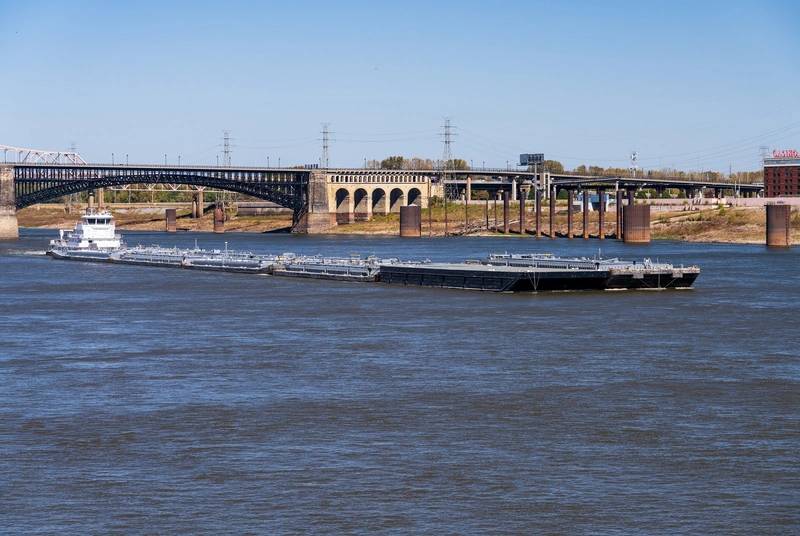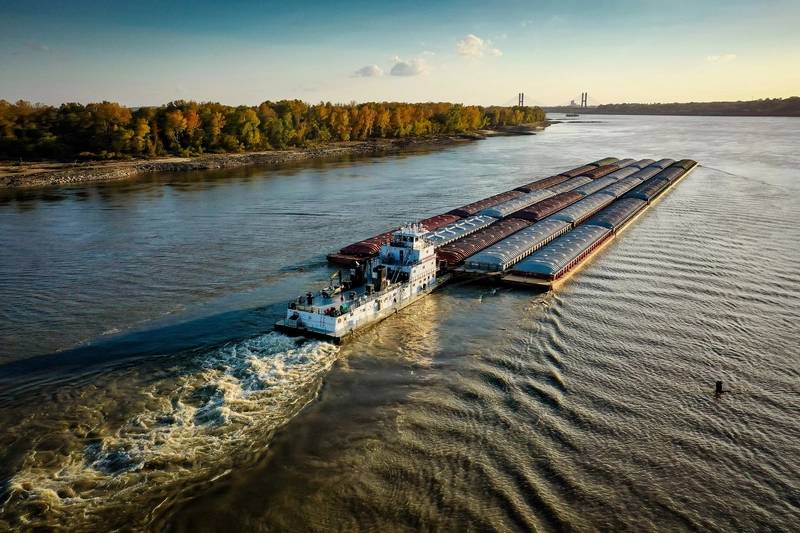Towboats: Pathways to Decarbonization
There are many forces pushing stakeholders across the global maritime industry to decarbonize.
In the U.S. inland waterways, regulations aren’t one of the main drivers—at least not at the moment, according to Mike Complita, principal and vice president of strategic expansion at Elliott Bay Design Group, a naval architecture firm.

Speaking on a panel at the IMX trade show in Nashville, Complita said proposed rules from the California Air Resources Board (CARB) are “driving massive change on the West Coast”, and noted that similar movements from states like Washington, Oregon and potentially New York and Texas could make their presence felt. “My expectation is that, in very short order, we will start to see those regulations in the coastal states—the changes that they make—move their way into the inland river system,” Complita said.
In addition, most ports, including coastal and inland, have goals or mandates targeting net-zero sometime between 2040 and 2050, Complita said. “I do think that even without the regulations, we're going to see a lot of interest in some of these new technologies and really pushing towards that in the next five to 10 years to meet those goals.”
Many within the industry have long been opposed to a “patchwork” approach to environmental mandates and regulations—where individual states create and enforce their own sets of rules. A towboat working on the Mississippi River system, for example, would have to meet separate regulations from several states.
“As an engine OEM, it's pretty difficult to manage the different pockets of regulations that we find,” said Caterpillar tug and inland waterways account manager Gary Sarrat, speaking on the same IMX panel.
With new mandates and regulations coming down the line, engine manufacturers must design and produce multiple systems that cater to the needs of its customers in different regions. “It is difficult to take an engine platform and technology, adopt it to the particular regulatory needs of a certain region and then get that proven, fleshed out, tested and certified,” Sarrat said. “That process does take [time].”
Another panelist, Brian Rafferty, vice president of business development and sustainability at Marquette Transportation Company, said that from an operator standpoint, to company is patiently observing to get a better picture of what the regulatory landscape is going to look like. “We're very cautious to not want any one specific cookie cutter solution regulated in our industry, because all of our operations are different. Different solutions are going to come to the table for every one of us, and so we need the flexibility in whatever regulatory environment that is created to be able to do the right thing for our tugboat operators and our crews and equipment.”
Rafferty said that Marquette is not currently seeing significant pressure from its customers to decarbonize, and he noted that marine transport is already the most environmentally friendly method of moving bulk commodities.
“We all want to do the right thing. All of us want to find a way to decarbonize in a safe and reliable way,” Rafferty said. “We have to keep in mind that inland marine transportation is the greenest form of transportation already, and we actually have a relatively small footprint in the overall scheme of things, so there is a perspective that needs to be maintained here.”
“In terms of drivers, are we having end users coming to the table for us and trying to drive change within our operation or organization? No, we're not seeing that yet, and so that pressure doesn't exist,” Rafferty continued. “Until that happens, we're going to continue to be cautious, studious observers, trying to find the right solution for our operations and people and move forward that way.”

Sarrat said a range of solutions will be needed for the industry to progress along its decarbonization journey. “There's no one silver bullet for the industry or for a particular marine operator to decarbonize. It really depends on your operations, your vessels, the capability of your people on board the vessels,” he said. “At Caterpillar, our challenge is to make sure that we touch on each of these potential decarbonization paths. It's not just hybridization, it's not just batteries, it's not just methanol or other alternative fuels, biodiesel and renewable.”
“There are a number of ways to [reduce carbon emissions], and as we work through this and develop the technologies, it's imperative that you work with us, we work with you, to understand your particular operation,” Sarrat continued. “Let's sit down and talk about what's a good fit for your operations. It may not be one path, it may be entirely another path that we're working on that makes sense, and it may be that you have multiple paths in your fleet depending on the type of boats that you have. That's why Caterpillar is working on multiple paths with alternative tools, multiple ways to turn that propeller and create less carbon.”
The panel’s moderator, Anthony Odak, chief operating officer at John W. Stone Oil Distributor, said the company has taken a number of approaches to shrink its environmental footprint, exploring solutions such as biodiesel, shore power and, most recently, renewable diesel. The drop-in fuel acts much like conventional diesel but it is made from fats and oils, such as soybean oil or canola oil. “By August, we should be at a million gallons of renewable diesel, which should, generally speaking, reduce our greenhouse gases by 75%,” Odak said.
Rafferty pointed to Marquette and other operators’ long history of incremental improvements made to make vessels more efficient, reduce emissions and become more environmentally friendly. “A lot of them have been done for economic reasons—lower fuel burn, fuel consumption, all of that—but the ancillary benefit is lower emissions,” Rafferty said. “We continue to study and look at opportunities that are new technologies to become more efficient.”
Complita agreed that there are many opportunities for incremental changes that deliver big benefits, citing vessel performance monitoring and bottom coatings as examples. “For a very low cost, you can put monitoring on your vessel to monitor equipment and replace it before it breaks. You can monitor engine performance and the speeds these boats are running. I know that there are a lot of operators telling their captains, ‘Hey, if you bring it back 5% or a small amount, we can save all this fuel.’”
“Advancements in bottom coating technology are incredible,” Complita added. “[Coatings manufacturers have] come up with earth friendly, water friendly, environmentally friendly bottom coatings that improve your performance. They're not cheap, but compared to what they save you in the long run, it's significant.”
“We need to be looking at and implementing together these little, smaller steps to what we can do to make changes now that add up over time,” Complita said.
More drastic—and perhaps more difficult—changes are also in the works, and alternative fuels like methanol, hydrogen and ammonia are among the solutions gaining interest to help operators reduce emissions.
Complita and Elliott Bay Design Group have hands-on experience with both methanol and hydrogen through their work as part of Maritime Partners’ Hydrogen One towboat project. The first-of-its-kind vessel, which will be built by Bourg, La. shipyard Intracoastal Iron Works for operator American Commercial Barge Line (ACBL), will be equipped with reformer technology that converts bunkered methanol to hydrogen on demand.
Caterpillar is also working with methanol in a big way. Having run its engines on methanol at its test center in Peoria, Ill. for several years, the company recently signed a memorandum of understanding with Damen Shipyards Group, in the Netherlands, to demonstrate its methanol-fueled Cat 3516E marine engines aboard a tugboat in 2026. And Sarrat said Caterpillar is exploring other areas to deploy the technology as well, including potentially ferries and river towboats. “There's no limit to where we can adapt this if it makes sense for you, the operator, and if the financing and the economics makes sense,” he said.
But everything circles back to regulations. While regulators might not be pushing towboat operators to implement cleaner technologies today, it is regulators that ultimately decide what can and cannot be installed on board a working vessel, and how that vessel can be operated.
It’s often repeated that regulators like the U.S. Coast Guard have failed to keep up with the quickening pace of technology development. Complita said the Coast guard has been “fantastic” to work with throughout the development of Hydrogen One. The agency recently issued the project partners a Design Basis Agreement (DBA), which sets the rules for the installation of novel onboard technologies, helping to clear the regulatory path toward the vessel's eventual entry into service.
